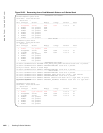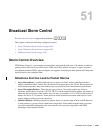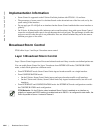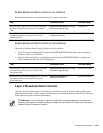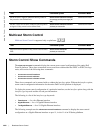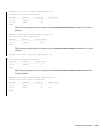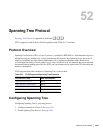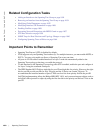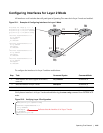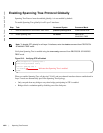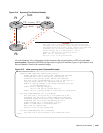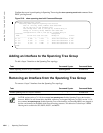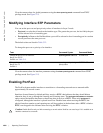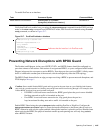1050 | Spanning Tree Protocol
www.dell.com | support.dell.com
Related Configuration Tasks
• Adding an Interface to the Spanning Tree Group on page 1054
• Removing an Interface from the Spanning Tree Group on page 1054
• Modifying Global Parameters on page 1055
• Modifying Interface STP Parameters on page 1056
• Enabling PortFast on page 1056
• Preventing Network Disruptions with BPDU Guard on page 1057
• STP Root Selection on page 1059
• SNMP Traps for Root Elections and Topology Changes on page 1063
• Configuring Spanning Trees as Hitless on page 1064
Important Points to Remember
• Spanning Tree Protocol (STP) is disabled by default.
• FTOS supports only one Spanning Tree instance (0). For multiple instances, you must enable MSTP, or
PVST+. You may only enable one flavor of Spanning Tree at any one time.
• All ports in VLANs and all enabled interfaces in Layer 2 mode are automatically added to the
Spanning Tree topology at the time you enable the protocol.
• To add interfaces to the Spanning Tree topology after STP is enabled, enable the port and configure it
for Layer 2 using the command switchport.
• The IEEE Standard 802.1D allows eight bits for port ID and eight bits for priority. However, the eight
bits for port ID provide port IDs for only 256 ports and the C-Series can contain 336 ports. To
accommodate the increased number of ports, FTOS uses four bits from priority field in the port ID
field.This implementation affects the Bridge MIB (RFC 1493), and you must interpret objects such as
dot1dStpPortDesignatedPort object by using the first four bits as the priority and the last 12 bits as the
port ID.



